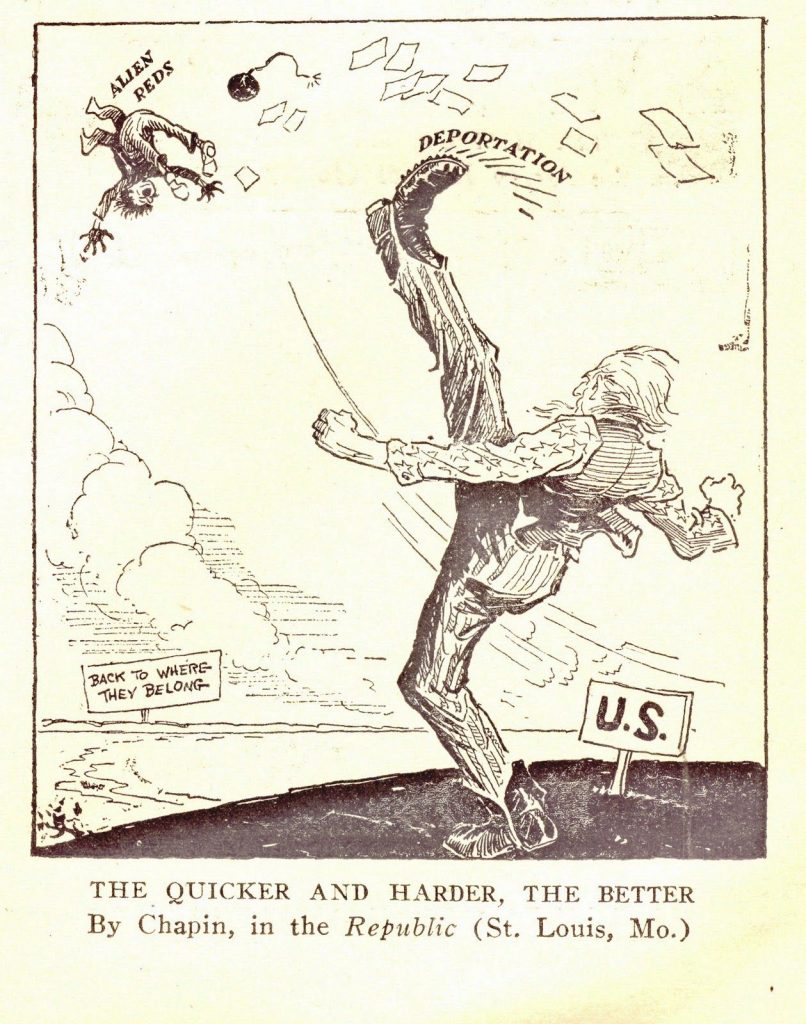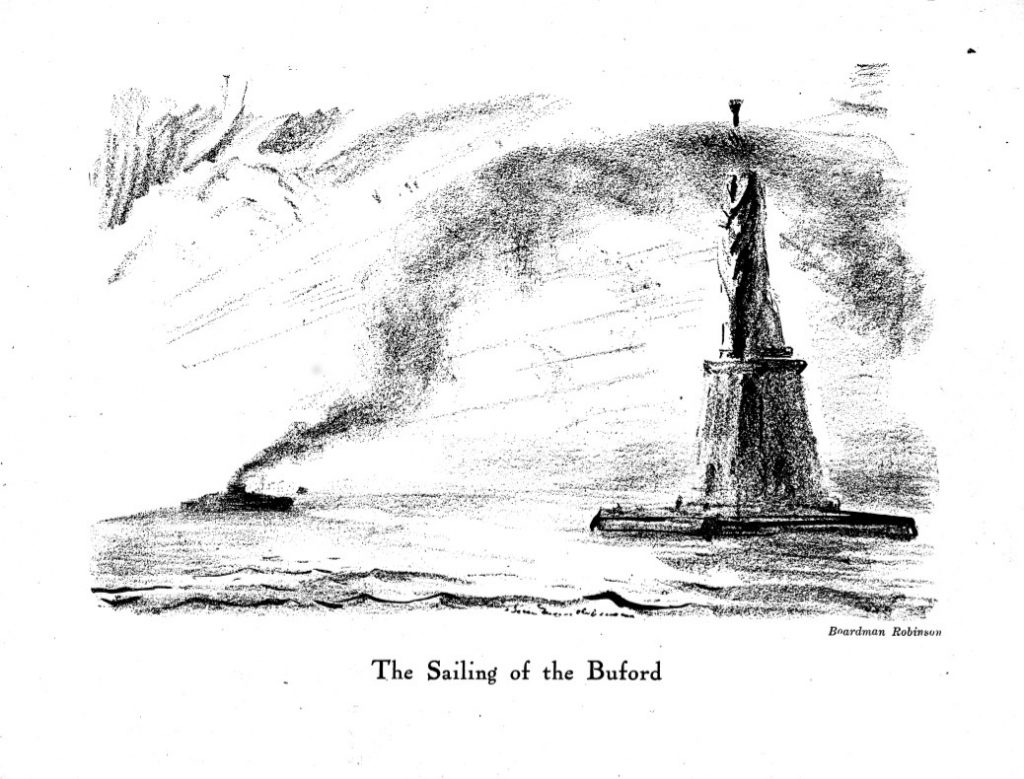
As part of the ongoing research for my book on the global history of immigrant radicals who were deported during America’s First Red Scare, I have posted brief profiles of 836 (and counting) individual deportees I have identified. This list is a work in progress, and entries are being added updated as I obtain additional information.
Who is included:
This list includes radicals and suspected radicals who were deported between 1918 (following America’s entrance into the First World War) and 1925, when the last of the foreign-born radicals arrested between 1917 and 1920 were expelled, some after serving prison sentences or being interned as “enemy aliens.” It includes both those who were deported by government order and those who were ordered deported but “voluntarily departed” at their own expense with the government’s consent (both categories were included in US government deportation statistics). It does not include those who fled the country to avoid arrest or deportation. It includes both individuals deported for belonging to legally-defined “anarchistic classes,” and others who were suspected of radicalism but deported on other grounds (most commonly for entering the country without inspection or being retroactively deemed “likely to become a public charge” at the time of their entry).
This is not a complete list. In the fiscal years (June-July) 1918-1926, the United States deported 979 aliens as “anarchists,” and an unknown number of additional radical immigrants under other statutes. The largest single group of deportees, composed of 242 alleged radicals (as well as seven unrelated deportees) departed on the USAT Buford on December 21, 1919. However, it appears that no complete list of Red Scare deportees was produced by either the Bureau of Immigration or the Bureau of Investigation. I have instead had to rely on partial lists and mentions of individual cases included in these organizations’ files, congressional testimony, radical publications, newspaper reports, and other sources.
How to use this site:
Profiles have been posted in small batches. They are organized in alphabetical order by last name, followed by alternate spellings and pseudonyms in parentheses. (The Cyrillic spellings of Russian names are generally my best guess; American sources from the era were wildly inconsistent in their spellings of such names. The same is true of the transliteration of Chinese names in the Roman alphabet.) You can also browse the Index of Names.
Birth years are often approximate, usually having been calculated from an individual’s age at the time of their examination by immigration authorities, and some may therefore be off by a year.
You can search by individuals’ nationalities (country of birth and, in some cases, ethnicity [i.e. Jewish, Lithuanian, etc.]) by using the tags above.
Occupations describe the individuals’ employment in the US, not necessarily the work they engaged in before arrival or after their deportation.
Political affiliations represented include the syndicalist Industrial Workers of the World (IWW), the anarcho-syndicalist Union of Russian Workers of the United States and Canada (URW); the anarchist Partido Liberal Mexicano (PLM); anarchists unaffiliated with larger organizations; the Communist Party of America (CP); the Communist Labor Party (CLP); the Socialist Party of America (SP); the Socialist Labor Party (SLP); and unaffiliated socialists. You can search by political affiliation by using the tags above.
You may also use the “Search” box at the top of the page to look for individual names, locations, etc.
The main sources used for compiling these profiles are case files from the Records of the Immigration and Naturalization Service (INS), Record Group 85, National Archives and Records Administration, Washington DC; the Old German Files (OG) and Bureau Section Files (BS) of the Records of the Federal Bureau of Investigation (FBI), Record Group 65, National Archives and Records Administration, College Park, MD (as digitized at fold3.com); and (for Italians) the Casellario Politico Centrale (CPC), Archivio Centrale dello Stato, Rome, Italy.
A special thanks to Molly Thacker and Brooke Thompson, who photographed hundreds of INS files for me; Malcolm Archibald, who has translated a number of Russian-language sources; D.J. Alperovitz, who has provided photographs of several IWW members; and the dozens of other archivists, translators, activists, and colleagues who have helped me locate, acquire, and read material from across the globe while undertaking this research.
Finally, if you have additional information about any of the deportees, or spot an error, please contact me!
